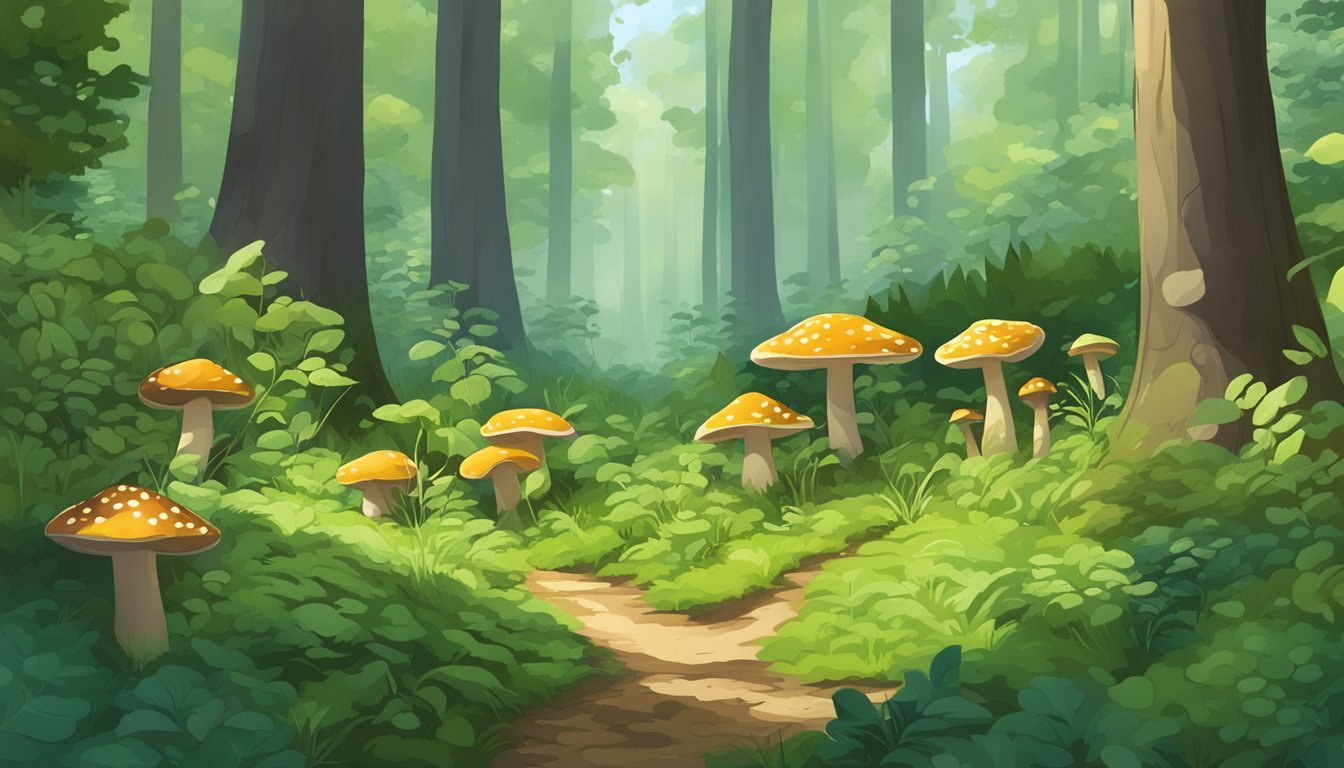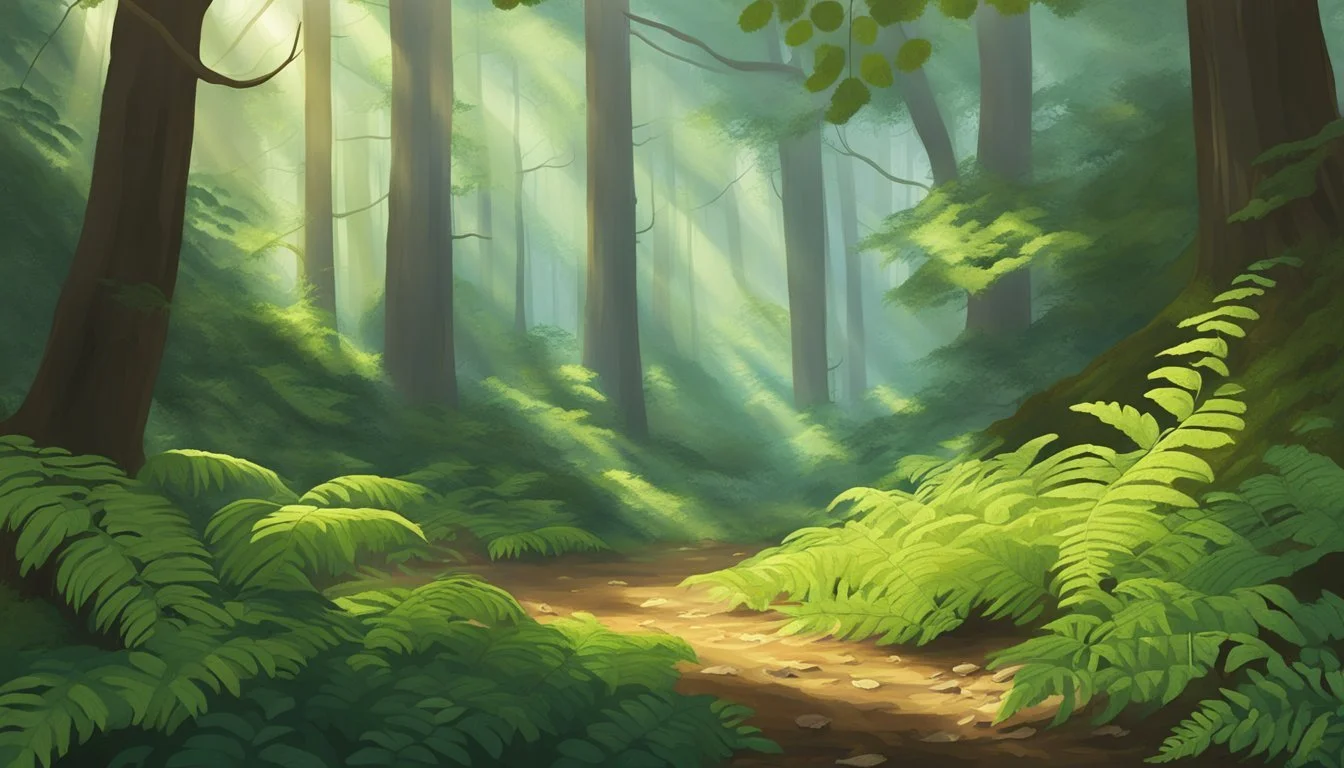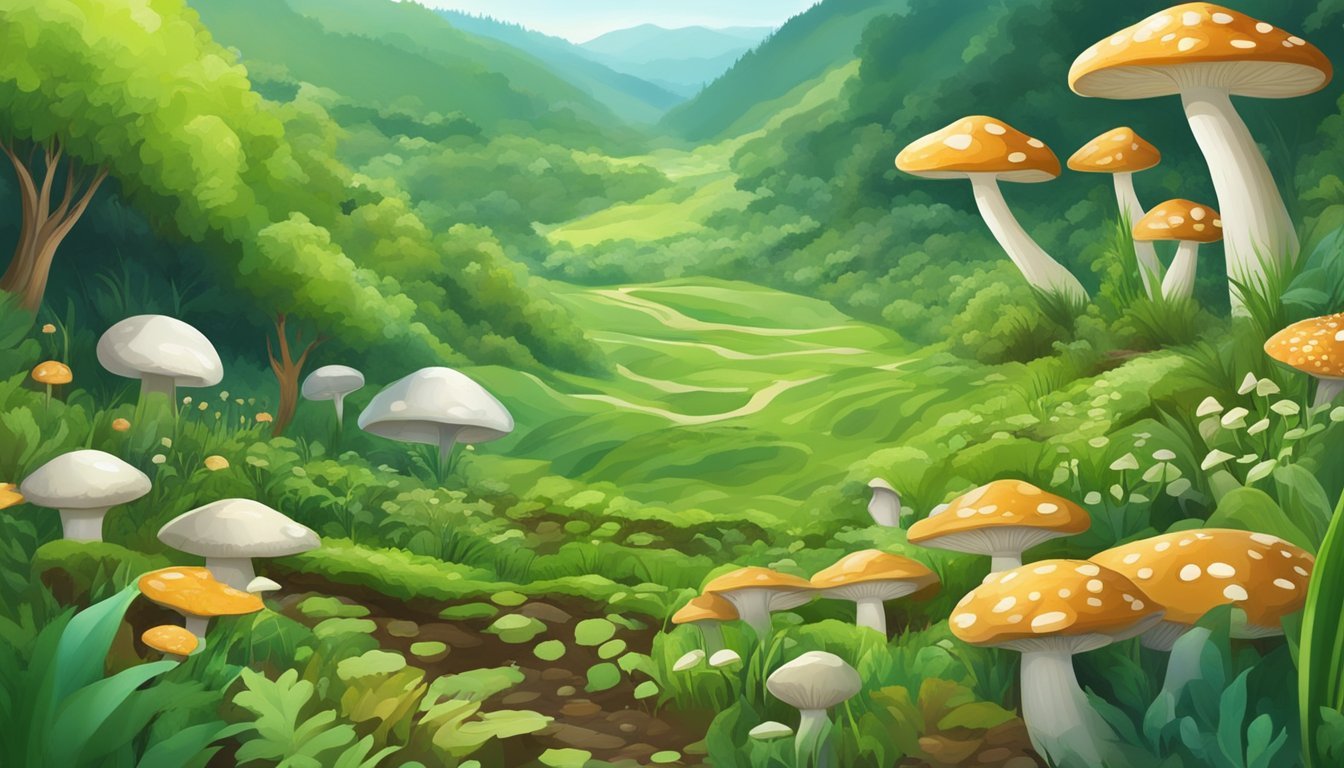Central Valley Mushroom Hunting
A Guide to Foraging Safely and Successfully
Mushroom hunting in California's Central Valley offers a unique and rewarding experience for both beginners and seasoned foragers. The region, known for its diverse ecosystems, provides fertile ground that supports a variety of mushroom species. Hunting for wild mushrooms like chanterelles, lion's mane, and morels can be particularly fruitful in this area.
Los Padres National Forest is a prime destination within the Central Valley, boasting a range of biomes from grasslands to redwood forests. Each season brings its own set of opportunities for mushroom enthusiasts. Edible and medicinal fungi thrive here, making it a hotspot for those looking to explore nature's bounty.
Safety is paramount while foraging. Knowing which species are safe is crucial to avoid any potentially toxic varieties. Traditional guides and local experts can offer invaluable advice, ensuring a successful and enjoyable mushroom hunting adventure in California's Central Valley.
Essentials of Mushroom Hunting
Mushroom hunting in California's Central Valley requires knowledge of both the basics of foraging and adherence to safety and legal guidelines. This ensures a successful and safe experience for all mushroom hunters.
Understanding the Basics
New foragers should familiarize themselves with the local landscape and the types of edible mushrooms commonly found in the area. Field guides are invaluable, offering pictures and descriptions to help identify species such as oyster mushrooms and morels. A map is also important, as mushrooms often grow in specific geographic locations.
Equip yourself with a few essential tools: a basket to carry mushrooms and allow spores to disperse, a knife to cut stems cleanly, and mesh bags to keep different types of mushrooms separate. Knowledge about the best times to forage—typically in fall—can significantly improve your chances of a fruitful hunt.
Safety and Legal Guidelines
Safety is crucial for anyone engaging in mushroom hunting. Identifying toxic mushrooms like Amanita muscaria (Fly Agaric) is vital, and beginners should never consume mushrooms without confirmation from an experienced mycologist. Proper tools, such as a small brush for cleaning dirt off your finds, can also help prevent contamination.
Legally, foragers must obtain necessary permits to hunt on public lands and adhere to local regulations. Respecting the environment and other mushroom hunters is equally important, as is learning about potential hazards like poisonous species and falling debris in burned areas. Being educated and prepared ensures a safe, enjoyable foraging experience.
Mushroom Species in Central Valley
Central Valley is home to a variety of mushroom species, from common edibles to rare and seasonal varieties. The region's diverse climates and ecosystems provide an ideal environment for many different types of fungi.
Characteristics of Common Species
In Central Valley, some of the most commonly found mushrooms include oyster mushrooms, morels, and golden chanterelles.
Oyster mushrooms often grow on cottonwood logs and prefer moist environments. They can be recognized by their fan-shaped caps and white to light brown color.
Morel mushrooms are typically found one year post-burn in forests, thriving in areas affected by fires. They have a distinctive honeycomb cap and are prized for their rich flavor.
Golden chanterelles are another common species, easily identified by their bright yellow color and trumpet shape. They grow in areas with plenty of leaf litter and thrive in the damp conditions of fall and winter.
Rare and Seasonal Varieties
King bolete (Boletus edulis), also known as porcini mushrooms, can occasionally be found during specific seasons. They have a large, brown cap and a thick, white stalk. They are sought after for their nutty taste and meaty texture.
Amanita muscaria, or Fly Agaric, though famous for its bright red cap with white spots, is less common and can be toxic. Hunters should exercise caution and ensure correct identification.
During the peak mushroom hunting season in fall, enthusiasts might also encounter boletes and other rare species. These lesser-known fungi add to the diverse mushroom landscape of Central Valley, each offering different textures and flavors that appeal to foragers and culinary experts alike.
Seasons and Climates for Mushroom Foraging
Mushroom foraging in California's Central Valley heavily depends on seasonal patterns and the region’s unique weather conditions. Key factors include rainfall, temperature, and the overall climate which directly impact the availability of different mushroom species.
Understanding Seasonal Patterns
Mushroom foraging in the Central Valley is predominantly influenced by two primary seasons: fall and spring. During these periods, consistent rainfall and moderate temperatures create ideal conditions for mushroom growth.
Fall: Foraging typically starts around mid-October and extends through early December, benefiting from the initial autumn rains. The dropping temperatures and increased moisture encourage the growth of diverse fungi.
Spring: Another peak season occurs from late February to April. Melting snow and spring rains contribute to moist soil, fostering the emergence of mushrooms. This season often brings out morel mushrooms, which are highly sought after.
Effects of Weather and Climate on Fungi
Weather variations, particularly rainfall and temperature, significantly influence fungal growth in the Central Valley.
Rainfall: Adequate rainfall is crucial. Atmospheric rivers, which bring substantial precipitation, lead to a 'super bloom' of mushrooms. Without sufficient rain, mushroom populations decline sharply due to dry soil conditions.
Soil Temperature: Stable, moderate soil temperatures are vital for mushrooms to thrive. Sudden temperature changes can inhibit fungal growth or even destroy emerging fungi.
Fallen Trees: Decaying wood provides a natural substrate for many species. Areas with abundant fallen trees, especially in moist conditions, are hotspots for foragers.
In summary, successful mushroom hunting in Central Valley hinges on understanding the seasonal and climatic factors that foster fungal growth, ensuring both timing and location align with optimal conditions for foraging.
Finding Mushroom Hotspots
Central Valley offers ample opportunities for mushroom foragers, with diverse locations and habitats that cater to different species. Key spots include public lands, private properties with permissions, and specific forests and state parks.
Popular Locations for Mushroom Foraging
Central Valley and its surroundings are prime areas for mushroom hunting. Near Fresno and Dinuba, enthusiasts can find various mushroom species, especially during the cooler months.
In the Sierra and Stanislaus regions, particularly at elevations above 5500 feet, burn morels thrive in areas affected by recent wildfires. These locations are known for their rich post-burn morel populations.
Los Padres National Forest and Salt Point State Park are also renowned. These areas provide a mix of public and private lands where mushrooms like chanterelles and porcini are often found under oak and monterey pines.
Habitats and Their Significance
Mushrooms grow in diverse California habitats, each offering unique foraging opportunities. Oak trees are significant as they support various fungi, including morels and chanterelles.
Monterey pines are another important habitat, especially for those seeking porcini mushrooms. These pines create fertile grounds conducive to mushroom growth.
Public lands, such as Los Padres National Forest, are accessible and often yield fruitful foraging trips, especially in the understory and forest floor. Private lands, obtainable with proper permissions, can also be productive, particularly in less-trafficked areas.
Post-wildfire areas in the Sierra are crucial for finding burn morels, a prized find for many enthusiasts. Utilizing resources like historic wildfire maps can enhance the chances of a successful hunt in these regions.
Gear and Techniques
Successful mushroom hunting in the Central Valley requires the right equipment and techniques. Understanding what gear is essential and how to practice safe and effective foraging will enhance your experience and ensure a fruitful hunt.
Must-Have Equipment
When heading out for mushroom hunting, certain equipment is essential. Sturdy walking shoes with good traction are crucial for navigating diverse terrain safely. A pocket knife proves useful for carefully cutting mushrooms at the base of the stem.
A mesh bag or basket is recommended for collecting mushrooms. These containers allow spores to disperse as you move, promoting further growth. Also, consider bringing blanching tools if you plan to process your finds immediately. Portable meals like sandwiches or wraps ensure you stay energized throughout the hunt.
Foraging Best Practices
Foraging requires knowledge and respect for nature. Always avoid harvesting mushrooms unless you're certain they're safe to eat. Consulting field guides or a mycologist can help in identification.
Practice sustainable foraging by taking only what you need and leaving some mushrooms behind to continue the lifecycle. Blanch or dehydrate mushrooms as soon as possible to preserve their quality. Respect the environment by staying on marked trails and carrying out all trash.
Using these gear and techniques will help ensure a successful and enjoyable foraging experience in the Central Valley.
Mushroom Identification and Handling
Identifying mushrooms accurately is crucial for mushroom hunters to avoid the dangers of toxic species. Proper handling techniques ensure their preservation and safety for consumption.
Identifying Edible versus Toxic Species
Mushroom hunters must differentiate between edible and toxic mushrooms to ensure safety. Edible mushrooms like Morels, Chanterelles, and Oyster mushrooms are frequently found in the Central Valley.
A field guide is an essential tool, featuring detailed images and descriptions. It aids in recognizing key characteristics such as cap shape, gill pattern, and habitat.
Toxic species like Amanita muscaria (Fly Agaric) can be mistaken for edible varieties. It is important to note their distinct features: white gills, a volva at the base, and a bright red cap. Due diligence, cautious examination, and consulting multiple sources can prevent accidental poisoning.
Preservation Techniques
Properly preserving mushrooms maintains their freshness and extends their shelf life. Drying is a common method; it involves placing mushrooms in a dry, well-ventilated area or using a food dehydrator. This technique is effective for varieties like Morels.
Freezing is suitable for many types, but mushrooms should be blanched first to maintain texture and flavor. By cleaning and slicing them before freezing, they can be easily used in future dishes.
For short-term storage, refrigeration works well. Mushrooms should be kept in paper bags to prevent moisture buildup. Proper handling and preservation practices ensure that the mushrooms remain safe and enjoyable to consume.
Conservation and Sustainability
Mushroom hunting in California's Central Valley requires attention to environmental impacts and sustainable practices. Foraging must be conducted in ways that protect the ecosystem and ensure the long-term availability of wild mushrooms.
Environmental Impact of Foraging
Foraging can significantly disrupt local ecosystems if not done responsibly. Trampling vegetation, overharvesting, and disturbing animal habitats are common issues. In areas like the Central Valley, mycelium networks are crucial as they facilitate nutrient cycling and soil health.
Disturbing these networks can have long-term negative effects on both fungi and plant communities. Members of the Fungus Federation emphasize minimal impact practices to help protect these natural systems.
Sustainable Foraging Methods
Adopting sustainable foraging methods includes several key practices. Prioritize picking only mature mushrooms and leave younger ones to grow and reproduce. Use a knife to cut mushrooms at the base, reducing harm to mycelium.
It's also important to only take what you will use, ensuring plenty remain for wildlife and future foragers. Joining local mycology groups or contacting experienced guides can offer valuable insights and training on ethical foraging.
Ethics and respect should guide every mushroom hunter's actions to preserve these natural resources for future generations.
Engaging with the Mushroom Hunting Community
Connecting with fellow mushroom hunters and accessing educational resources are key to enhancing your mushroom hunting experience in Central Valley. Here’s how to get involved.
Local Clubs and Societies
Local clubs and societies, such as the Fungus Federation, provide mushroom hunters with a platform to share knowledge and experiences. These groups often host meetings, forays, and identification workshops.
Avid mushroom hunters benefit from these gatherings by learning from experienced mycologists and gaining practical field knowledge. Membership in these clubs can also offer access to specialized forums, discount rates for events, and newsletters with updates on mushroom sightings and conditions.
Educational Resources and Events
Educational resources and events play a significant role in keeping hunters informed. Workshops, webinars, and local university extension programs offer insights into mushroom identification, ecology, and conservation.
Events like the annual mushroom fairs provide opportunities to observe a variety of fungal species and learn from experts. There are also online resources such as the MeatEater guide, which offers advice on mushroom preservation and cooking techniques, enhancing the overall experience of foraging in Central Valley.









